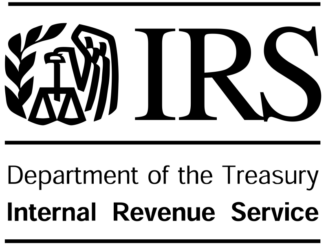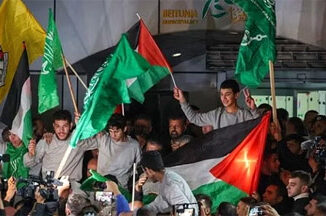
In September 2001 President Bush announced that he wanted Osama bin Laden captured—dead or alive—and a $25 million bounty was eventually issued for information leading to the killing or capture of bin Laden. Bin Laden evaded capture, however, including in December 2001, when he was tracked by U.S. forces to the mountains of Tora Bora in eastern Afghanistan. Bin Laden’s trail subsequently went cold, and he was thought to be living somewhere in the Afghanistan-Pakistan tribal regions.
U.S. intelligence eventually located him in Pakistan, living in the garrison city of Abbottabad, and in the early morning hours of May 2, 2011, on orders from U.S. Pres. Barack Obama, a small team of U.S. Navy SEALs assaulted his compound and shot and killed the al-Qaeda leader.
One World Trade Center and the National September 11 Memorial and Museum
The physical and symbolic void left by the destruction of the Twin Towers was filled on November 3, 2014, with the opening of One World Trade Center, a 1,776-foot (541.3-metre) skyscraper, which instantly became a dramatic new landmark on the Manhattan skyline. Adjacent to One World Trade Center are the National September 11 Memorial and Museum (completed in 2011 and 2014, respectively). Within the 8-acre (3.2-hectare) memorial plaza, twin 1-acre (0.4-hectare) reflecting pools occupy the footprints of the Twin Towers. The pools feature the largest man-made waterfalls in North America and are edged by bronze panels inscribed with the names of the victims of the September 11 attacks as well as the names of the six people who died as a result of the truck bombing of the World Trade Center in February 1993. Among more than 400 trees in the grove that surrounds the pools is the “Survivor Tree,” a Callery pear tree that was discovered badly damaged at Ground Zero, removed and nursed back to health, and then returned to the site in 2010. The memorial and plaza were designed by architects Michael Arad and Peter Walker, winners of a design competition that featured 5,201 submissions from 63 countries.
The museum includes a glass-encased pavilion with an atrium that features two 80-foot (24-metre) trident-shaped steel columns that were part of the facade of the North Tower. The museum’s Memorial Hall is adorned with 2,983 tiles (representing the victims of the September 2001 and February 1993 attacks), each one a blue watercolour with which artist Spencer Finch attempted to capture the colour of the sky on the day of the September 11 attacks. At the centre of the tiles is a quote from Virgil’s Aeneid:
“No day shall erase you from the memory of time.”
The museum’s Foundation Hall is a high-ceilinged, nearly 15,000-square-foot (1,400-square-metre) room that encompasses part of a surviving retaining wall of the World Trade Center and displays the “Last Column,” a 36-foot (11-metre) steel beam to which workers and others attached messages and posters during Ground Zero cleanup operations. The international impact of the September 11 attacks is demonstrated along the ramp that descends into the museum by a multimedia exhibit featuring recorded reminiscences by people from 43 countries in 28 languages.
9/11: Lessons for America
September 11, 2021 marks the 20 years of 9/11 terror attacks in America. The image of two passenger planes flying into the twin towers of the World Trade Center is permanently etched on public memory. This was, however, not the first time that the World Trade Center was under attack from terrorists.
In 1993, a suicide bomber had driven a truck to the World Trade Center in New York but it did not bring down the towers. Six people had died back then.
In 2001, the World Trade Center was also not the only target to have been hit by the terrorists – 19 of them belonging to al Qaeda. Four passenger planes had taken off from different airports in the US with three pre-decided targets. Two planes hit the New York buildings.
Third one hit Pentagon, the headquarters of the US Department of Defence and caused little damage to the building. The fourth had a bigger target – the Capitol Hill, the seat of US government in Washington DC.
The passengers of the United Airlines flight showed remarkable sense of courage and willingness to sacrifice their lives to protect the US. They challenged the terrorists and thwarted their attempt to take the flight to Washington DC. It crashed into an open field in neighbouring Pennsylvania.
For that one day on September 9, 2001, terror seemed to have become the master of the world. There was panic in every country. This was the first time that the US had been attacked by an outside force since 1941 when Japan targeted Pearl Harbour in the Hawaii Islands and the first ever on the mainland America since the Revolutionary War of 18th century.
The terror attack taught several lessons not only to the US but the whole world. These lessons could be summarised as ahead.
No country is invulnerable
The audacity and the meticulous planning by Al Qaeda exposed the vulnerability of the security establishment of all the countries of the world. No country could now be seen as invulnerable.
For long, terror attacks in India from Paskistan-based groups were treated by the international community as localised affair arising out of the long-held animosity between India and Pakistan and religious bigotry in the two countries.
The 9/11 attacks shattered that myth. For the first time, the world learnt this lesson that terrorism is a policy of some state and groups aspiring to acquire political powers by stoking religious fundamentalism.
Policing is key
Policing is key to stop any crime including terrorism. Policing is, by the way, not only done by the police forces but all the vigilance agencies. A few days after the 9/11 attacks emerged videos showing hijackers of the plane that crashed on to the Pentagon were being screened at Washington’s Dulles airport.
The security person is seen in the video doing just a routine job of screening the hijackers, two of whom were on an anti-terrorism watch list and one person had no photo-ID. Still they all were given clearance to board the plane. This happened in the US, which was known to frisk even high and mighty from the other countries.
Had the policing been done efficiently, the plot might have been exposed or at least one target could have been saved and terrorists caught alive. Jaish-e-Mohammed chief Masood Azhar, now the UN-designated terrorist, had been arrested in Kashmir in 1994 due to simplest of policing.
Intelligence info should not be ignored
Most powerful countries or the ones aspiring to be powerful boast of their robust intelligence gathering. The Central Intelligence Agency of the US is the most powerful and resourceful of them all. The CIA had picked up definite intelligence about an “imminent” terrorist attack on the US soil.
Reports suggest that the CIA had sent its report to Condoleezza Rice, then national security advisor to US President George Bush, apparently several months before the 9/11 attacks happened. The CIA intelligence was specific that al Qaeda was planning “multiple” and “spectacular” attacks in the US in immediate future.
Similar warnings have reached the White House of George Bush but the state agencies largely ignored them, considering “usual reports” from the ground operative with no “actionable intelligence”. This proved massively fatal. The lesson learnt was that intelligence of terror plots cannot be taken lightly irrespective of the number of reports ground operatives send.
Terrorism follows money
In every single case of terror attack, money has been involved. In 9/11 attacks, money flowed through international agencies but the authorities ignored it.
Probe into the 9/11 attacks revealed that money was sent to terrorists who hijacked the planes from overseas. The hijackers, in turn, sent money to United Arab Emirates in four batches only three days before they stunned the world.
All the four payments were made through Western Union but the company or the security agencies fail to notice the transactions, which were suspicious in nature in the backdrop of intelligence inputs.
The agencies have become more alert and money laundering laws in most countries have been tightened. Still, some safe havens for money laundering are in play and they can play perfect foil to future terror plots. A country can forget this lesson from the 9/11 attacks only on its own peril.
Political instability
breeds terror
Political instability or infighting could be a breeding ground for terrorism. This is a disguised yet very important lesson from the 9/11 terror attacks. It acts both ways – political instability in the source country (e.g. Pakistan, Afghanistan) and a target country (e.g. the US, India).
The US witnessed an unusual political instability in the months and years before the 9/11 attacks. Then US President Bill Clinton survived impeachment after the House of Representative voted to commence the proceedings. The motion fell in the Senate.
This had followed a sexual harassment case against Bill Clinton by a former Arkansas state employee Paula Jones. This case brought to light another massive scandal involving Bill Clinton and a White House intern Monica Lewinsky.
The political infighting at that time in the US was unseen for decades. When presidential election happened in 2000, it remained unresolved for 41 days. The US was living a political mistrust. Ten months later, coordination among the government machinery failed and terrorists succeeded in killing 2,977 people in one swoop.
Fight against terror is not over
That the fight against terrorism is far from over is a lesson that is not lost on any country except for those sponsoring terror and hobnobbing with terror masters. The US is fighting to destroy terror infrastructure and groups in the Middle East and Afghanistan.
India is fighting its own battle against Pakistan-backed terrorism. According to Global Terrorism Index, 77 countries witnessed acts of terror in 2017. This number is only half the story as only three years ago in 2014, there were 106 countries as victims of terrorism.
Clearly, the lesson from 9/11 attacks that the world cannot afford to forget is that the national and global security agencies cannot lower their guard at any point of time in their fight against terrorism. These agencies need to be foolproof every single time while terrorists need just one loophole to succeed and kill humanity.





Be the first to comment